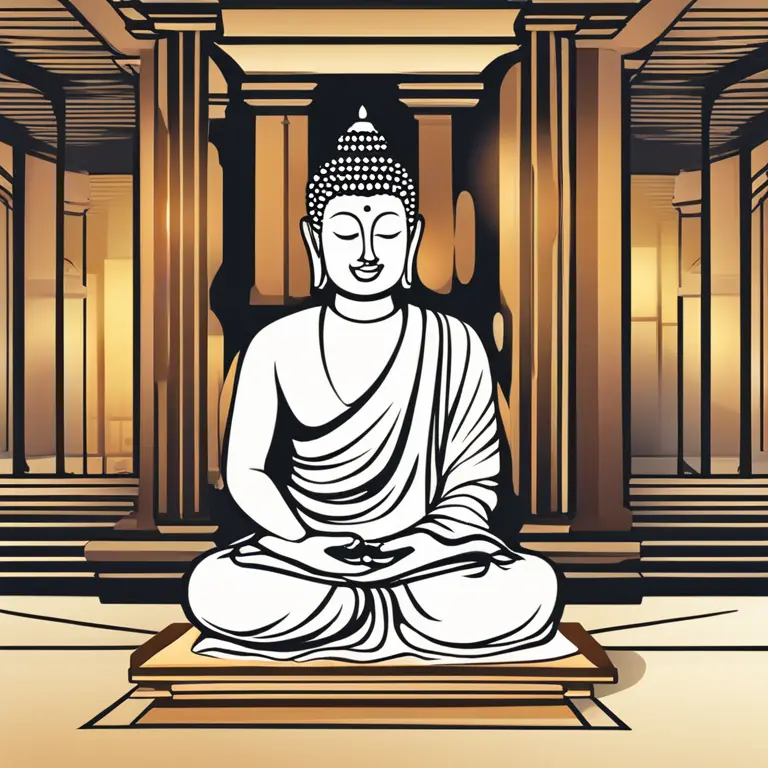
Effective Meditation Techniques for Your Calm
Discover a selection of powerful meditation techniques that can enhance mental clarity, reduce stress, and promote inner peace.
article by Hina Kurosawa
Meditation: A Timeless Tool
Meditation has been a cornerstone of personal development and spiritual practice for thousands of years, crossing cultural and geographic boundaries. In today's fast-paced world, the ancient art of meditation has taken on a renewed significance. It provides a rare opportunity for individuals to step back from the chaos and reconnect with their inner selves. As we advance into 2024, meditation remains a pivotal tool for achieving tranquility, with a variety of approaches tailored to modern lifestyles. From the traditional to the innovative, each technique can be a step towards a more mindful existence.

Focused Attention Meditation
One fundamental style is focused attention meditation (FAM), which involves concentration on a single object, sound, or thought. The simplicity of this method makes it accessible to beginners. It helps cultivate a heightened sense of awareness and control over wandering thoughts. Practitioners often start with a few minutes of FAM, gradually extending their sessions as they become more adept. This form of meditation is known to improve concentration, reduce stress levels, and support brain health in the long term.

Mindfulness Meditation
Mindfulness meditation, a practice widely recognized and appreciated in both the East and West, encourages an attentive, non-judgmental awareness of the present moment. It promotes a deep connection with one's current experiences, embracing thoughts, feelings, and sensations without trying to change or judge them. Mindfulness can be practiced anywhere and at any time, making it a versatile approach. Its benefits include increased empathy, reduced anxiety, and the cultivation of a more grounded and resilient mind.

Body Scan Relaxation
Body scan, or progressive relaxation, invites participants to focus on one part of the body at a time, often starting at the feet and moving upwards. This technique helps identify areas of tension and consciously release them. By developing a finer attunement to physical sensations, this method can lead to profound relaxation and pain reduction. It's particularly beneficial for those who spend long hours at a desk or in front of screens, offering a way to counteract the effects of a sedentary lifestyle.

Movement Meditations
Movement-based meditations, such as qigong, Tai Chi, and certain forms of yoga, are dynamic practices that integrate gentle movements with breath control and mental focus. These meditations are especially suitable for individuals who find stillness challenging or wish to maintain physical activity. By promoting the flow of energy, or 'chi', throughout the body, they can enhance overall wellbeing while also providing the mental benefits of traditional meditation practices.
Transcendental Meditation
Transcendental Meditation (TM) is a technique that utilizes a mantra—a sound, word, or phrase repeated silently—to help the practitioner transcend the level of conscious thought. Typically taught by certified instructors, TM has a standardized method of instruction and requires two sessions per day, each lasting 20 minutes. Its ease of practice and evidence-backed claims for reducing chronic stress and improving cardiovascular health have attracted a global following.
Visualisation and Guided Imagery
For those who benefit from a more directed experience, visualization and guided imagery meditations offer a narrative journey to evoke specific feelings or manifest desired outcomes. Participants are led through scenarios in their mind's eye, often accompanied by soothing sounds or music, to inspire a state of calm, boost creativity, or build confidence. These techniques are sometimes used in therapeutic settings to support healing and personal growth.
Published: 1/18/2024
Modified: 1/18/2024
More predictions
Come back here soon to learn more about yourself and your future

